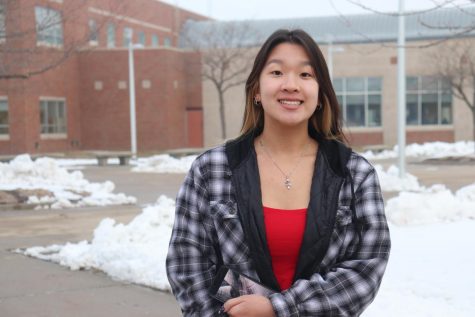Creating barriers through herd immunity
Getting vaccinated does play a role in creating a safe environment for others

The Biden Administration is set to purchase 200 million vaccines from Pfizer and Moderna, both recommended by the CDC and approved by the FDA.
January 28, 2021
Throughout this COVID-19 pandemic, I’ve heard a multitude of suggested solutions in regards to handling the virus. Ideas have ranged from having a full lockdown with strict mask mandates to letting natural selection come into play — where people return to their normal lifestyles and the weakest die off while the strongest live on to see another day. While that example is far too inhumane as the solution does not take into account the complex lives people maintain as well as ties to family and friends, it seems people have taken this outlook seriously, in turn, demeaning the over 400,000 deaths that have already happened.
Looking back at March of 2020, the pandemic had taken a huge toll on the daily lives of normal people, shutting down schools, instilling curfews and limiting social lives. At the time, calls for a new vaccine were increasing as numbers spiked across the United States. Today, vaccine rollouts have begun all across each state to reduce the number of confirmed cases as well as protect people from the COVID-19 virus.
Despite all of these developments, individuals are still skeptical about the cocktail of ingredients that make up the vaccine itself. Much of the skepticism stems from the collisions of politics and science, as some people in the US maintain the pandemic is not as severe as it is made out to be, invalidating all of those affected as well as the families who have lost loved ones. Others have believed that the vaccine itself contained a microchip, or the vaccine was not trustworthy as its development was much faster than past vaccine processes. While the examples above are from simply concerned individuals, it’s important to see the bigger picture: herd immunity.
Herd immunity is when a large amount of a group or population gets vaccinated, creating immunity to an infectious disease. As a result, indirect protection is created for the general population and those who could be affected by the said disease. Mayo Clinic, a nonprofit American medical center, stated in regards to highly contagious diseases, “It’s estimated that 94% of the population must be immune to interrupt the chain of transmission.” While the example they used in their article was measles, the same idea can be applied to COVID-19 as new variants arise, one more contagious than the other. For us, creating immunity can start at getting vaccinated, and move toward getting more and more people involved. However, people today are still split. Pew Research Center, a nonpartisan data collecting institution, found “Overall, 60% of Americans say they would definitely or probably get a vaccine for the coronavirus, if one were available today, up from 51% who said this in September.” While this data does give citizens and medical professionals an idea of who wants to get vaccinated for COVID-19, the amount isn’t near enough to reach herd immunity. As stated by Cleveland Clinic, another nonprofit American academic medical center, “The estimate for COVID-19 is that roughly 50 to 80% of the population will need to be vaccinated to reach the herd immunity threshold.” A higher vaccination rate creates a safer environment for not only ourselves but the people around us. This can be seen throughout history’s infectious diseases and how eradication was facilitated by vaccinations.
As for students in Millard, Nebraska’s COVID-19 distribution plan is set up in phases with subcategories of tiers stating who gets vaccinated first. From Wednesday, January 26, Douglas Country is still working on getting vaccines distributed to individuals ages 65 and older, but the slower pace of administering the vaccine has put a damper on the progress. Because of this, distribution will take longer than anticipated, and considering the Biden Administration’s plan to purchase 200 million more doses, the distribution should increase as well. With new supply, people must take action and get vaccinated.
For those who do choose to get vaccinated, they are able to act as barriers for others who are not immune to a disease. By getting as many people as possible vaccinated, the increasing death count from a preventable disease can stop being a reality for everyday people. The worry of having to self isolate after exposure to another person can decrease. The limitations set in place can unfold, and life can go back to “normal.”
Getting vaccinated is only one step in the big formula of stopping the spread, but it is a critical variable that must be included.






